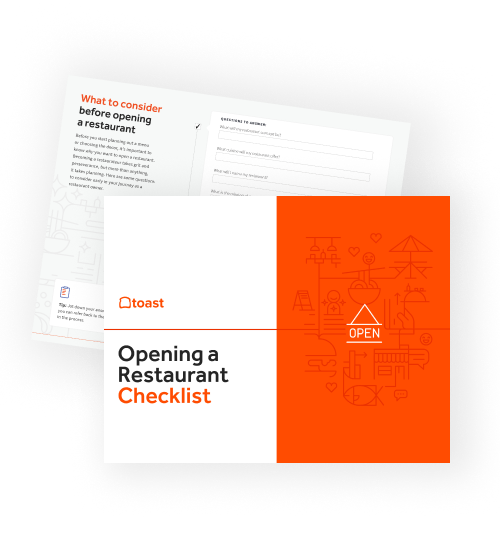
How to get a Food Handler's Permit
Food handling permits are required for restaurant staff in most states. Here's everything you need to know.

Caroline PriceAuthor


Opening a Restaurant Checklist
So many things go into opening a restaurant. Use this free PDF checklist to set your new restaurant up for success.
Get free downloadFood handler’s permits are a crucial part of legally operating any restaurant in the United States. But who needs a food handler’s permit? And how do you go about getting one?
Here’s everything you need to know about food handling permits.
Opening a Restaurant Checklist
So many things go into opening a restaurant. Use this free PDF checklist to set your new restaurant up for success.

What is a food handler’s permit?
A food handler’s permit, sometimes also called a food handler’s license, is required for any business that processes, handles, and sells food to consumers. This permit covers food safety, ensuring that anyone handling food in a commercial setting is doing so in accordance with all regulations to reduce food-borne illness and disease outbreaks.
The regulations learned in a food handler’s permit process include proper cooking temperatures, sanitation, personal hygiene procedures, specific ways of handling raw and cooked food, and allergen identification.
Who needs a food handler’s permit?
The requirements around who needs a food handler’s permit vary from state to state. Some states require that there be one licensed food handler per restaurant, and others require that anyone who works with food at all is licensed.
Check out your state regulations to figure out what needs to be done in your restaurant.
How much does a food handler’s permit cost?
This varies by state, but the cost of a food handler’s permit can range from $0 - $200 per person. Some states require a manager to have higher training requirements than a server, so the costs can vary by position as well.
How do you get a food handler’s permit?
Step 1: Look up the requirements for your state
Each state has different requirements, so googling “food handlers license Utah” “or food handlers license Washington” is a great place to start. The process is going to be different in Texas than it is in Idaho, so make sure you’re following all state and local guidance.
Step 2: Take a class
Find a class that fulfills the requirements of your state. Usually, these courses consist of classes, test preparation, and a final exam that will give you a certificate of completion.
ServSafe and Learn2Serve are two that offer state-specific online training classes at affordable prices. Some places, like New York City, provide their own free training course, so make sure you check out your local guidance for the most accurate information.
Step 3: Pass the exam
Again, the specifics around the exam vary regionally. Some only require that you pass an online exam from an approved testing company (like ServSafe), and others have a statewide exam that each applicant must complete. Either way, passing the exam grants you the permit or license to serve and handle food safely in your restaurant.
Step 4: Stay up to date
You’ve passed the exam! But how long does a food handler’s permit last? A permit typically lasts from two to five years, but this depends on your state and training program. Make sure to stay on top of any deadlines or extension periods so you don’t end up with a lapse in licensing.
How long does it take to get a food handler’s permit?
Most courses are quick to complete, ranging from a couple of hours to a couple of days. The certification tests should also take a couple of hours to complete, and once you pass, most programs will give you an online certificate right then and there.
Start serving!
Though this process might be tedious, it’s important to make sure your restaurant is following all steps necessary to provide safe service to your guests. The good news is that this process is typically quick and inexpensive, and you’ll be on your way to serving customers in no time.
Is this article helpful?
DISCLAIMER: This information is provided for general informational purposes only, and publication does not constitute an endorsement. Toast does not warrant the accuracy or completeness of any information, text, graphics, links, or other items contained within this content. Toast does not guarantee you will achieve any specific results if you follow any advice herein. It may be advisable for you to consult with a professional such as a lawyer, accountant, or business advisor for advice specific to your situation.
Read More
Subscribe to On the Line
Sign up to get industry intel, advice, tools, and honest takes from real people tackling their restaurants’ greatest challenges.



